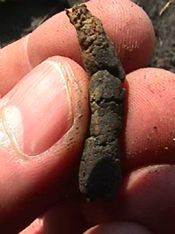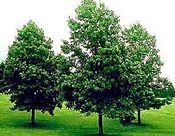





We built the Test Garden on a city lot, and as it turns out, we thereby gave ourselves the same kind of problem that a lot of gardeners face. The problem is dirt, or rather, bad dirt. Fortunately, we're proving that even bad dirt can make a good garden, but before I explain how, and how you can deal with the same problem, a bit more background. (By the way, we're happy to have problems in the Test Garden, even big problems that we did not foresee, because we built the Garden to bring you news of proven plants, garden styles, methods, and ideas. When we fix our own bad dirt, we can show you how to fix yours.)
continue reading belowWe started with a tough spot for the Test Garden. A dry cleaner stood on the corner and an auto body shop next to it. We razed the buildings, bulldozed up their basements, discovered ancient foundations deeper still, and dug them up too. When we finished we had a city block of sticky, brown clay, excavated as much as six feet deep in places and corrugated like a small mountain range by the tracks of the bulldozer. After a rain, the water pooled for days in the ruts and pits.

Usually, gardeners have to diagnose bad drainage by subtle signs, such as squishy footing the day after a rain, or yellowing leaves on the black-eyes Susans next to the garage but not by the fence, or the way the dirt sticks to the spade when you make a hole to plant a shrub.
We did not have to be sleuths. We just had to look at the brown water that stood for days in our mudhole. Occasionally, I would climb around the excavation, pick up a gob of clay, and roll it between my palms, more in wonderment than any spirit of investigation. I could make cylinders as thin as a pencil.

By the way, this is a quick test for any soil: Dig a hole ten inches deep, take a handful of dirt from the bottom of the hole, squeeze it hard, open your hand, and poke your new clod with a finger. If the clod holds together, your dirt has a lot of clay, which means slow drainage or worse. If it crumbles with a poke, it has a bit of sand or organic matter, and the drainage is likely to be fine.
When we excavated for the Test Garden, I thought our subsoil was uniquely awful. I don't think it's unique now: not since I helped plant trees in the suburbs. There the developers seem to make a custom of scraping the topsoil off all the lots when they start a new batch of houses. (They sell the dirt to people who need reasonably better dirt than they have: a subject that will come up shortly, for reasons you can guess.) Not content with their vandalism, they run trucks, cement mixers and delivery vans over the subsoil, smashing it to the density of concrete. When they finish a house, they smooth the contours of the lot with a bulldozer and then lay sod over the subsoil. Voila! Ready to move in.
The new homeowner has no idea what's under the sod, but soon finds out. I volunteered in one yard where a sharp, pointed shovel refused to cut the clay below the sod, even when I jumped on the foot rests.
If your yard has development dirt, or just naturally heavy, clay-like stuff that drains slowly, one fix is to plant high: which means make a mound. When you buy a shrub or tree, dig the planting hole wide and shallow, at least three times as wide as the root ball and half as deep, or less. (I've even seen small shrubs and trees do well when set right on the ground.)
Whether you dig a half-depth hole, no hole, or something in between, the crucial step is to bring in good dirt and spread it in a mound that reaches an inch or so above the top of the root ball and at least three times as wide as the root ball. Then mulch the whole mound, and make sure it does not dry out for the first year. The mound will drain much faster than the dirt below it, and roots, which need air, will spread happily through it. Eventually the roots will find the bad dirt, but thanks to the mound, they'll start near the surface, where even the bad dirt has more air and so is more hospitable to young roots.
By the way, you make the mound taller than the root ball because over the next few months the dirt will subside an inch or two.
In a way, the whole Test Garden is a mound because we covered the excavation with what we hoped was good topsoil. We bought the stuff from a dealer who sold two kinds of dirt, "fill" (which means terrible subsoil) and "black dirt," which sounds like topsoil, but can mean almost anything, from dredge spoils to the front yard of the house where I couldn't shovel a hole for a tree. We learned months later that some of our dirt came from soybean fields, so we've been pulling soybean weeds. In places, the fill is 6 feet deep (we have two 5-foot-tall hills in the Test Garden, and we also had to top off the excavated basements), but in most places it's about two feet deep. There's our mound.
We asked the contractor who brought in the dirt to start dumping at one end and work backward so his machines would not compact our fluffy, new fill. Unfortunately, the next contractors, who contoured the dirt and laid paths, ran their machines everywhere and left us with dirt as solid as brick paving.

Sometimes you have dirt so bad that the usual remedies don't help. Mounding might work only partially because all the roots stay in the mound (stunting the plant). Tilling and compost almost always work, but in the worst cases they take so much labor that no sane gardener will do it, or spend what it would cost to hire it done.
Copyright © www.100flowers.win Botanic Garden All Rights Reserved